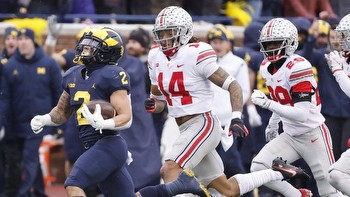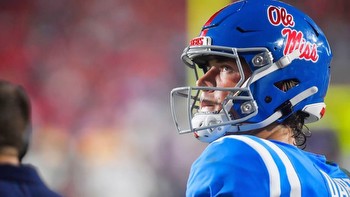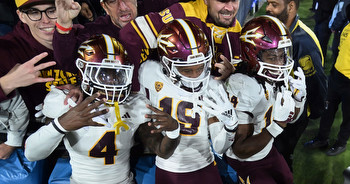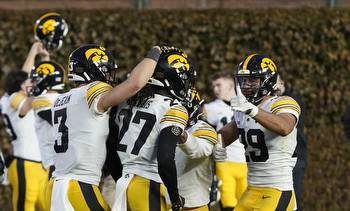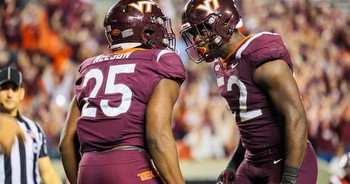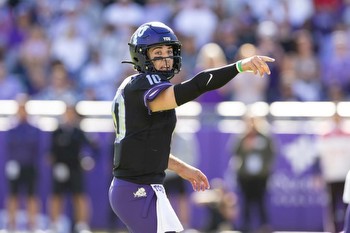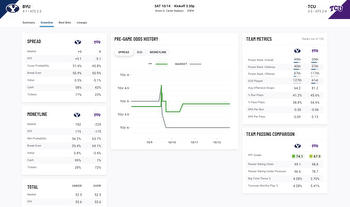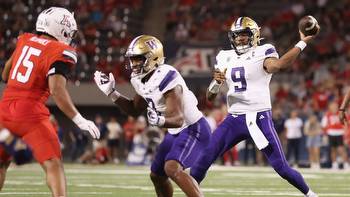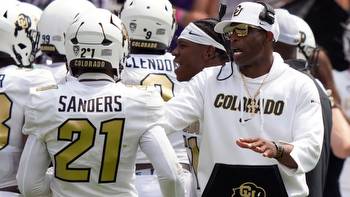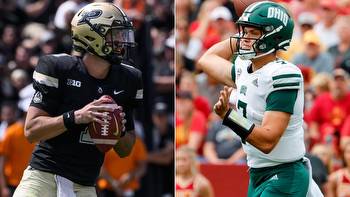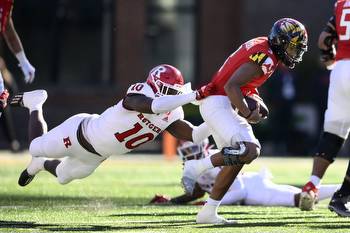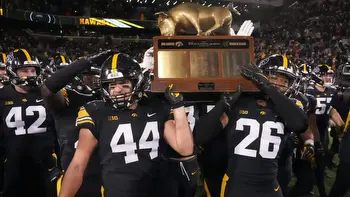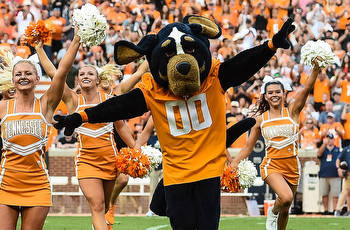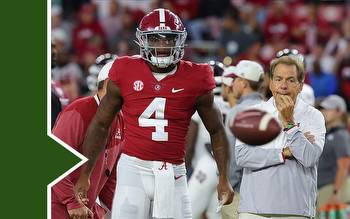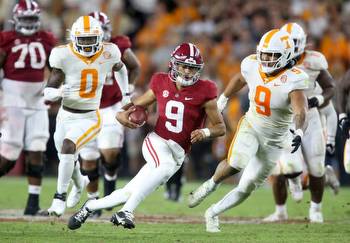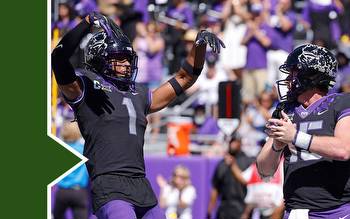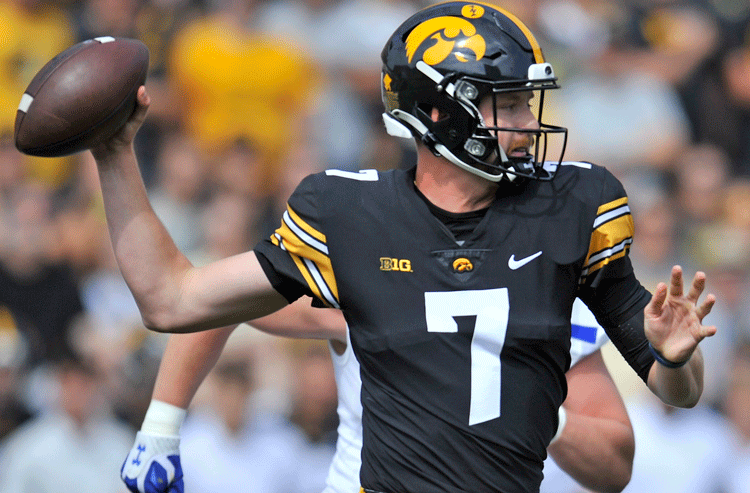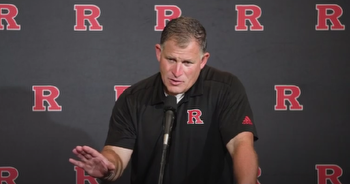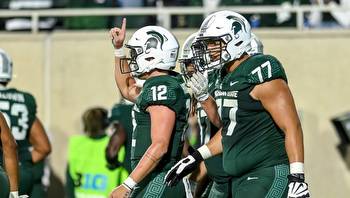College football betting preview: How to bet Washington-Oregon State
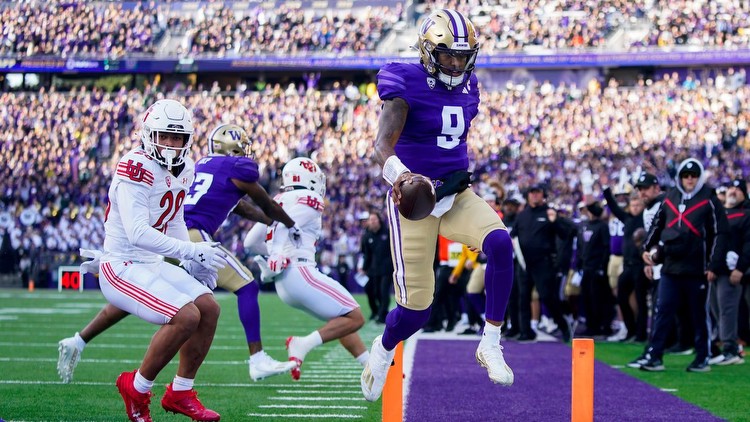
It was another frustrating 2-2 outing for these picks this past weekend, mainly because TCU scored three fourth-quarter touchdowns against Texas to push the game over the total by 1½. Still, at 23-17 with only a couple of weeks remaining in the season, we’re in okay shape as we hit the home stretch.
This column will give out four picks per week: the game of the week, a favorite, an underdog and a wild card, which can be anything (another favorite or underdog in a game that might be flying under the radar or a total, for instance). Hopefully we’ll all be in good shape by the time the clock hits zero at the national championship game in Houston on Jan. 8.
All spreads were taken Wednesday from DraftKings Sportsbook unless noted. All times Eastern.
No. 5 Washington at No. 11 Oregon State
The pick: over 63½ points
This has the makings of another Pac-12 shootout, thanks to two pretty good offenses and two defenses that have looked shaky at times.
For starters, neither team excels at tackling. Washington ranks 91st per the Pro Football Focus tackling grade, and the Huskies’ deficiencies were on display in last weekend’s win over Utah. The Utes produced a 53-yard touchdown off a screen pass and had another 41-yard gain that was the result of a missed tackle by cornerback Elijah Jackson. Oregon State has the worst PFF tackling grade of any Power Five program, ranking better than only 1-9 Connecticut among all Football Bowl Subdivision schools.
Plus, there’s the matter of Washington’s rushing defense, which is allowing 4.37 yards per carry (84th nationally) and a 48.2 percent opponent success rate (127th). Oregon State’s running game ranks second in success rate (52.8 percent) and ninth in yards per carry (5.39 yards).
Led by Heisman Trophy candidate Michael Penix Jr. at quarterback, the Huskies have put up at least 35 points in all but two games, and that includes last weekend against a top-20 Utah defense. Washington ranks third in offensive success rate and Oregon State is fourth, and though neither operates at a particularly fast clip, both offenses are efficient enough to score against defenses that can be had. The over is the play.
At 4-6, TCU has come crashing back to Earth after last season’s Cinderella trip to the College Football Playoff championship game. In 2022, the Horned Frogs were 6-1 in one-score games. This season, they’re 0-4. One of their other losses, 27-14 at Iowa State on Oct. 7, came about after dual-threat quarterback Chandler Morris — who ranked 10th nationally in total offense — went down with an injury early in the third quarter. He hasn’t played since, but even with backup Josh Hoover, TCU has remained competitive: Its past two losses, to Texas Tech and Texas, were by a combined 10 points, and the Horned Frogs’ postgame win expectancy was above 50 percent in both. A few lucky bounces, and the Horned Frogs are 6-4 instead of 4-6.
Baylor is a three-win team that has played like a three-win team, though the Bears also have had quarterback issues after Blake Shapen missed three games after suffering a knee injury in a season-opening loss to Texas State. Shapen’s return hasn’t mattered all that much; the Bears have beaten just two FBS teams by a combined four points. One win came about after the Bears erased a 35-7 third-quarter deficit against Central Florida on Oct. 1. They scored the other, a 32-29 win over Cincinnati on Oct. 21, despite getting outgained in terms of yards per play.
The Bearcats averaged a season-best 6.7 yards per carry in that game, and Baylor has one of the worst run defenses in the country (115th in success rate, 123rd in expected points allowed per rush). Horned Frogs running back Emani Bailey is averaging 100.6 rushing yards per game, and there’s a chance Morris will return from his injury to add another facet to TCU’s ground attack. Even if he doesn’t, I think TCU rolls to keep its bowl hopes alive.
North Carolina State at Virginia Tech
The pick: North Carolina State +2½
Put a good defense in front of Virginia Tech, and the Hokies have tended to struggle.
Seven of Virginia Tech’s 10 opponents have ranked 40th or worse in terms of defensive SP+, an opponent-adjusted measure of efficiency, and the Hokies are 5-2 in those games, averaging 32 points. But Virginia Tech’s three other opponents — Rutgers, Florida State and Louisville — are 21st or better in SP+ defense, and the Hokies lost all three by an average of 24 points, its offense producing just two touchdowns.
North Carolina State is 16th in defensive SP+. It has won three straight, allowing only 29 points total over those contests and seeing its Pro Football Focus defensive grade improve in all three. Opposing quarterbacks are averaging just five yards per pass attempt over that span, with just one touchdown and six interceptions.
Virginia Tech generally does not ask too much of quarterback Kyron Drones, who is averaging just 22.8 pass attempts over the Hokies’ past six games. The Hokies prefer to run the ball, ranking 27th in rushing play percentage (57), but again, good defenses have stymied Virginia Tech in that department: The Hokies averaged 6.6 yards per carry in recent wins over Syracuse and Boston College but only 2.4 in a blowout loss to Louisville on Nov. 4. The Wolfpack is allowing 3.32 yards per carry, and N.C. State is the pick.
Rutgers at No. 12 Penn State
The pick: Rutgers team total under 10½ points
The Scarlet Knights have scored 16 points — and just one touchdown — over their past two games. All 16 of those points came against Ohio State on Nov. 4, and, yes, the Buckeyes’ defense is quite good. But two of those scoring drives against Ohio State — both ended with field goals — began in Buckeyes territory, thanks to a turnover on downs and an interception. Last weekend, Iowa shut out Rutgers and held the Scarlet Knights to a season-worst 3.1 yards per play. Of Rutgers’s 10 drives that didn’t end in a kneeldown, nine ended with a punt. (The other was doomed by an interception.) Four of those 10 drives resulted in negative yardage.
Penn State’s defense is in the same league as Iowa’s: The Nittany Lions rank fourth in SP+ defense, and the Hawkeyes are second. In last weekend’s loss to Michigan, the Nittany Lions made the Wolverines one-dimensional (quarterback J.J. McCarthy threw for just 60 yards) and held them to a season-low 5.31 yards per play. Rutgers’s offense already is one-dimensional: The Scarlet Knights rank 99th in passing success rate and 110th in expected points added per pass play, and they pass the ball only 39.3 percent of the time (124th in the nation). And if Rutgers’s okay rushing offense can’t get going, things get ugly quick. Last week, Iowa held the Scarlet Knights to 34 net yards on 23 carries.
Rutgers has averaged nine points against the four best defenses it has faced (Michigan, Wisconsin, Ohio State and Iowa). The Nittany Lions will be salty after last weekend’s loss, and I don’t think they let the Scarlet Knights get going.

